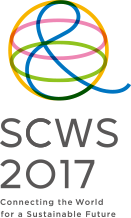Nature and Science Museums in an External Responsibility Context
By Emlyn Koster
Increasingly, we see that the boundaries between types of museums and between their local and global horizons are blurring. These trends enable museums—especially nature and science museums—to accelerate their attention to external impacts in environmental and societal contexts. For its part, the International Council of Museums has a global working group to re-examine the definition of ”museum”, first formulated in 1946 and last updated in 2007. Indeed, many types of organizations are starting to redefine success as the need to plan and operate with a triple bottom line—planet + people + profit—equally in mind. In a global context of peace and development, UNESCO’s call for science museums and science centers to maximize their contributions to the UN’s Sustainable Development Goals (SDGs) encourages a redoubling of all efforts to be relevant to what truly matters in the worlds of today and tomorrow.
Across our sector, a blurring of internal boundaries would strengthen its external value. Science centers could accelerate their expansion from a traditional focus on science literacy through interactivity towards science-driven issues with an adaptive toolkit; science centers and science museums could more readily view themselves with overlapping missions and convene more easily; and natural history museums could reposition themselves more quickly as integrated resources for the past, present, and future. As the declaration that culminated the 2012 National Science Foundation–funded meeting at the Smithsonian’s National Museum of Natural History in Washington, D.C., stated: “Humanity is embedded within nature and we are at a critical moment in the continuity of time… We have the urgent responsibility to give voice to the Earth’s immense story and to secure its sustainable future.”
The North Carolina Museum of Natural Sciences—host venue for the 2014 ASTC Conference, 2016 Wildlife Society Conference, and 2019 Citizen Science Association Conference—embraces these trends. The 2014 World Science Centre Summit in Mechelen, Belgium, urged our sector to embrace new connections and new meanings. In Raleigh, new examples include a series of evening town hall programs focused on SDGs, including the involvement of the UN and White House, as well as daytime and evening film and discussion programs (e.g. http://naturalsciences.org/calendar/event/world-elephant-day/). Our approach to university partnerships is an illustration of the advocacy in Mechelen by Susan Glover, then chief scientific advisor to the president of the European Union, that “research not communicated is research not completed.” The calling in Mechelen to exchange practices across our sector is also one that we embrace.
Applying my training as a geologist and experiences at the helm of the Royal Tyrrell Museum of Palaeontology, Ontario Science Centre, Liberty Science Center, and now the North Carolina Museum of Natural Sciences, I keenly accepted an invitation from Bernice Murphy in Canberra, Australia, editor of the celebratory 70th anniversary book project for the International Council of Museums. Just published by Routledge and titled Museums, Ethics and Cultural Heritage, its chapter 22 is titled “From Apollo into the Anthropocene: The Odyssey of Nature and Science Museums in an Externally Responsible Context.” Its main points may be summarized as follows:
In its conclusion, I noted: “Although the Anthropocene emphasizes environmental responsibility and encourages future thinking, nature and science museums are at their most powerful when they also integrate social responsibility and unravel past-present-future trends.” UNESCO’s invitation to our sector to focus on SDGs will hopefully stimulate all such considerations for the greater good.

